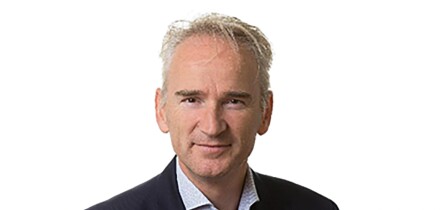CreditSights: The Week In Credit
Defying even the most optimistic of expectations, the bid in the corporate bond market just continued to gain momentum in the past week. The Merrill Lynch U.S Corporate Mater Index option adjusted spread has now tightened a full 16 basis points in April as investors are still clamoring for credit exposure. Much of the index tightening in recent weeks has been driven by outsized moves in previously out-of-favor credits whose spreads have come racing in as though the hounds of hell were on their heels.
The auto sector provided the most salient example. Ford Motor 10-year paper was trading as wide as 490 basis points in early April, but was last quoted at 330 basis points, having been even tighter earlier in the week.
First quarter earnings results in the sector didn't knock the cover off the ball, but they alleviated enough concern that investors finally went chasing the juicy spreads that the auto names had been offering for so long. Ford has "repaired" enough of the damage previously inflicted on bond portfolios that the company dared to broach the market with the first sizeable primary market offering seen in some time. This toe was dipped into foreign waters however, as it was a euro and not a dollar financing that came to market. Nevertheless, demand allowed an upsizing and set the stage for a likely near-term return to the dollar-denominated primary markets.
This is just one example of the "repair" trades that have driven much of the recent run in credit. Each instance has had a slightly different spin but the end result has been a bull run in some of last year's big underperformers. Household International paper led the game after the acquisition bid from HSBC. Sears waded in when they announced the intended sale of their credit card business.
Several of the more troubled utility names have joined in by addressing their near-term liquidity issues via equity issuance or the renegotiation of bank lines. And in the TMT sector, the long-awaited prospect of industry consolidation has come into play with news this week of potential merger talks between AT&T and BellSouth driving prices higher in the telecom arena, while AOL caught a bid on the back of its announced sale of assets to Viacom.
So with aggregate spreads now trading at levels they last saw in March 2000, and many of the names that dragged portfolio returns down last year playing catch up now, investors should be basking in the excess returns.
One wrinkle in that assumption however, is the fact that in an attempt to immunize (or at least minimize) the effect of the deterioration in value experienced by some of the biggest names last year, many investors instituted absolute exposure limits.
These caps on dollar amounts limited the size of the portfolio exposure that could be held to any one name, regardless of the relative size of the issuer. It was a great idea when names like Ford were trading to junk spreads and even the venerable GE was trading back of its pristine triple-A levels. But last year's "golden rules" look like becoming this year's "fool's rules," as they limit capturing the benefit of the repair trade in some of the bigger names in the index.
Admittedly, there is enough exposure to these names that everyone can benefit when they rally like they have in recent weeks. But unfortunately, it is quite possible that those investors who were caught long when the big names began to under perform last year no longer have the investment flexibility to have captured the full value of being overweight as they began to redeem themselves in recent weeks.
Analysis by CreditSights, Inc., an independent online credit research platform. Call (212) 340-3888 or visit www.CreditSights.com for more information.





